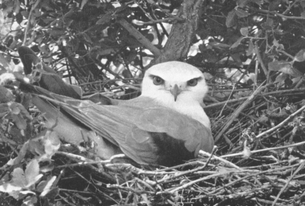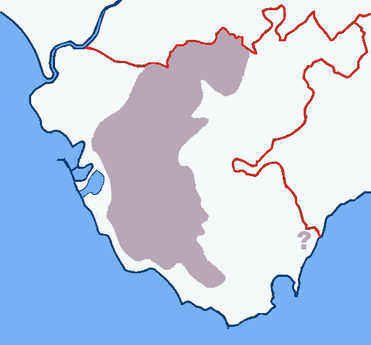

Given the proximity of the Moroccan population, it is surprising that the species only wintered here in Cadiz province (on La Janda) as recently as 1987 and first bred more recently still in 1995. My recent experience in Cadiz province certainly suggests that Black-winged Kite is now a widespread and fairly common species in suitable habitats in the area. They are frequent in open farmland dotted with trees, but absent from mountainous areas to the west and south and from intensively farmed 'sherry-culture' areas to the north west of Jerez plus built up areas. They also seem to avoid coastal saline marshes and extensibe wetlands. My map is based both on perosnal observations and an educated guess, based on habitat, where they should also be found. Given that I find them in a new area pretty much everytime I'm out in Spain this might not be too much of a guess. I've heard of birds being seen north of Gibraltar, but Have seen them myself. It is one of the few raptors missing from my 'terrace list' although I've seen it within sight of the village! By 2009 there were, I was told, “at least 35 pairs” in 2009. However, Stephen Daly reports on his blog (/information-books-information-centres--leaflets.html) that there are about 20 pairs in the “La Janda area” and possibly 100 pairs in the province.
This seems to accord more with my recent experience. Certainly I've found it easier t find here than even in Extremadura. A careful search of any of the lowland habitats in an arc from La Janda across to Medina Sidonia, Laguna de Medina, Arcos de la Frontera and on to Espera should ensure a sighting or two. I’ve found the Cantarranas/Los Naveros/La Janda area to be the best bet, but they can be found anywhere with the required mix of open farmland dotted with a few trees. Wintering birds on La Janda have risen from 6 birds (2002) to up to c40 (2008). This reflects the situation in nearby Huelva province on the Coto Donana where Black-shouldered Kites first bred in 2003 and where there are now c15 pairs. So how many pairs are there in Spain? That “1000 pairs”, unthinkable only a few decades ago, looks pessimistic and I wouldn’t be surprised if it wasn’t twice that number. The conventional explanation of this dynamic spread is the deforestation of light woodland (dhesa), but many areas that seem not to have been radically changed have also witnessed a sharp increase. I also suspect that they may have been overlooked in the past and that they were never quite so rare as they seemed. However, there's no doubt that until the 1970s they were pretty rare and restricted to Portugal as a breeding species. So the recent increase is both real and massive in scope. The earliest report from Spain that I've seen is in Irby's 'The Ornithology of the Straits of Gibraltar' which reports one being found near Seville in 1865 so it seems odd that the extreme SW took so long to be colonised..

 RSS Feed
RSS Feed
